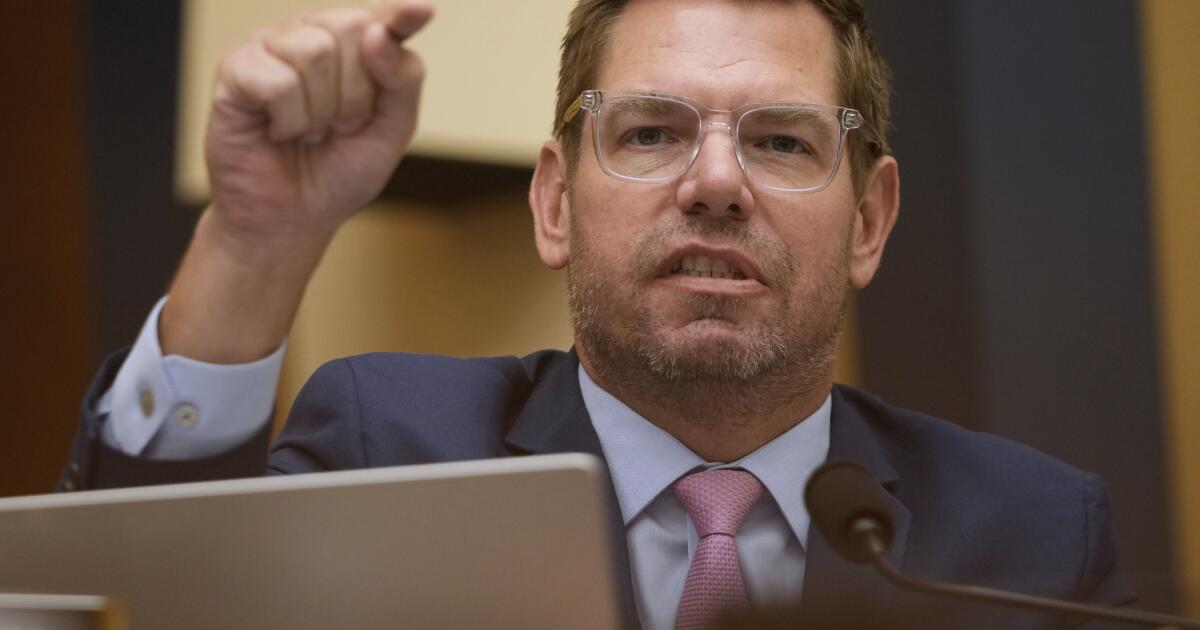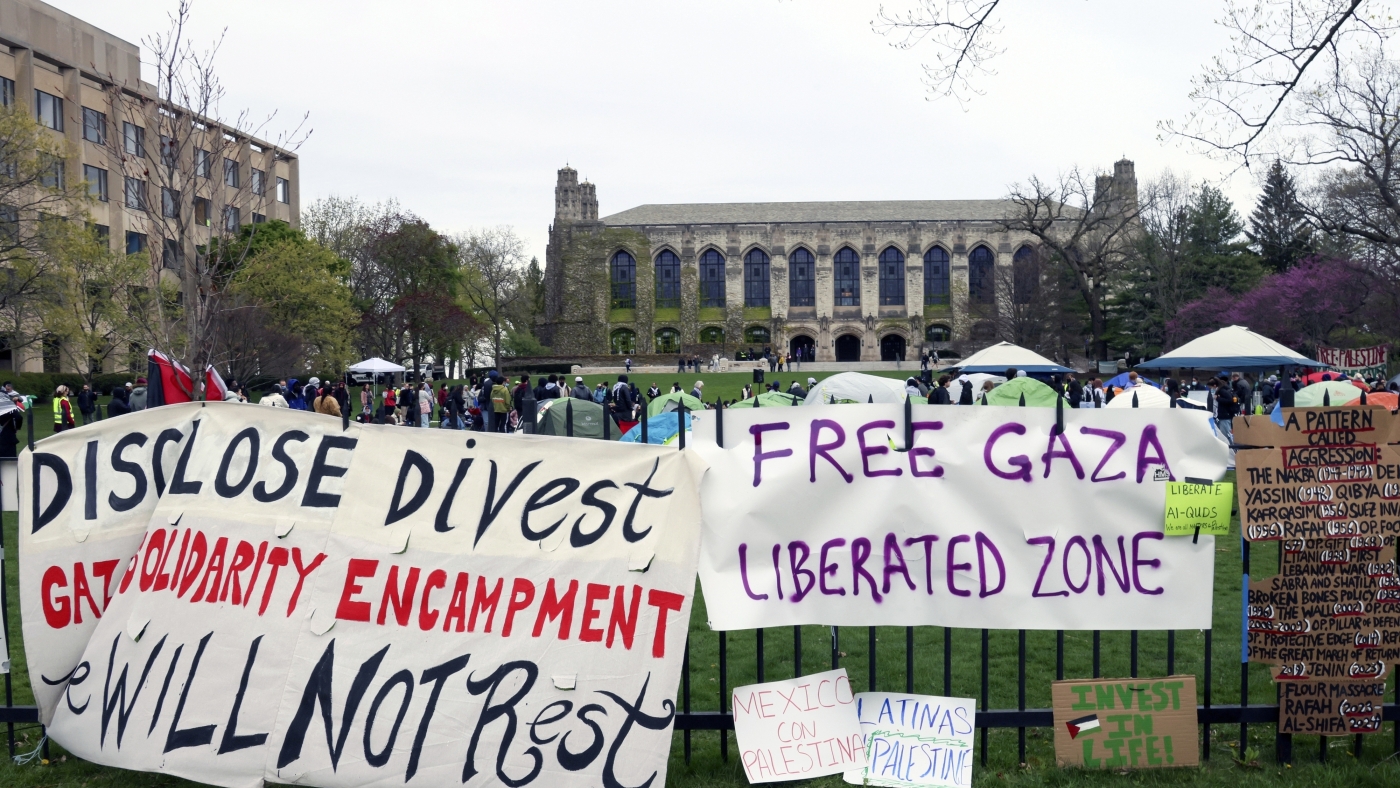Finance
COP29: Trillions Of Dollars To Be Mobilized For Climate Finance

BAKU, AZERBAIJAN – 2024/11/14: Participants walk in front of the main entrance during the United … [+]
World leaders are gathered in Baku, Azerbaijan, for the COP 29 on Climate Change. As the conference enters its final day tomorrow, the atmosphere is charged with anticipation. Will the leaders be able to conclude discussions on critical issues?
A document released by the UN this morning hints at progress in discussions on climate finance: while the exact figure remains undisclosed, it is mentioned that it will be in trillions of dollars. The decision on trillions of dollars is a positive step, as many experts have expressed concerns that a few billion dollars will be insufficient and will fall short of necessary action to address the urgency of climate change.
By the end of COP 29 , the world will hopefully get a new number. A lot has gone into deciding this number: 12 technical consultations and three high-level ministerial meetings. The final leg of the consultations is happening in Baku. It is worthwhile to take a look at the key items that came out of the draft document on finance today and the discussions that led to those decisions. Much of this document can be expected to feed into the final decision that comes out of COP 29.
A Decision On Trillions Of Dollars – The Quantum
What is a good number for a finance goal? Should the number be in billions or trillions? The draft text released today mentions that the amount will be in trillions. Although the exact number is unspecified.
One of the key outcomes expected from this year’s COP is this exact number which will become the new collective quantified goal, popularly referred to as NCQG. There is a high expectation that countries will be able to reach a consensus on a quantified number, which can be the North star to mobilize funds to address the urgency of climate change. It was during the COP in Copenhagen in 2009 that the earlier goal of mobilizing 100 billion per year was decied– an amount pledged by developed countries to support developing countries in addressing climate change by 2020. There are questions about whether that target was successfully met, with views from some countries that it was not met. The decision that came out today relfects this disagreement.
A few billion dollars would be unacceptable, according to Illiari Aragon, a specialist in UN Climate Negotiations, who has closely followed NCQG negotiations since they started. Many developing countries would be unsatisfied if a number of billions were proposed. In earlier talks, some numbers in billions were also floating around. Most estimations however point towards trillions. A number of at least 5 trillion, was estimated as being needed based on the Standard Committee of Finance of the United Nations as part of an assessment of needs proposed by countries in their Nationally Determined Contribution.
A Decision On The Contributor Base And Mandatory Obligations
Another key topic of discussion has been who contributes to the financial goal that comes out of COP 29. Some developed countries suggested expanding the donor base to also include countries like China and India. However, that was an unacceptable proposition, with media from India, based on interviews with experts, particularly reporting it would be unacceptable.
The new text released today goes away from the mandatory approach and adds flexibility to better reflect needs of developed and developing countries. The text states that it invites developing country Parties willing to contribute to the support mobilized to developing countries to do so voluntarily, with the condition that this voluntary contribution will not be included in the NCQG.
The document released today also states that it has been decided that there will be minimum allocation floors for the Least Developing Countries and Small Island developing countries of at least USD 220 billion and at least USD 39 billion, respectively. Deciding such a minimum allocation floor is a big step as these countries are particularly vulnerable to the extreme impacts of climate change. In March 2023, Malawi, in the African continent, was devastated by a tropical cyclone. Africa, according to some estimates, contributes to only 4% of global warming, but is particularly vulnerable to climate cahnge.
Some Decisions On Structure- What should be included?
The question regarding what types of finance will be classified as finance has been a key topic of discussion. The type of finance is crucial because it determines what kind of finance can really be aggregated to reach the big quantum goal.
In the negotiations so far, some countries suggested requiring funds to be channeled from the private sector as well. However, some parties questioned whether the private sector could be obligated to contribute to a goal and be made accountable for this goal. There were also discussion on grants versus loans. Many countries called for more grants and financing with higher concessional rates, reducing the repayment burden.
The document that came out today clarified both the above concerns. It states that the new collective quantified goal on climate finance will be mobilized through various sources, including public, private, innovative and alternative sources, noting the significant role of public funds. The decision to include the private sector is a significant step, as it provides an entry door for the private sector to be more actively involved in climate action. On grants and loans, the decision text states that a reasonable amount will be fixed in grants to developing countries, with significant progression in the provision. The decision on this allocation floor for grants, is also an essential consideration as it helps these countries to avoid being tied up in debt.
The decisions on climate finance published today during COP 29, which will act feed into the final decisions from COP 29, can add significant momentum to what is available for climate finance and action. They can also help build trust among many vulnerable countries in the power of multilateral decision-making process, showing that the world is indeed united in addressing global warming.

Finance
European markets often soar in December, but what’s behind the rally?

There’s something about December that seems to charm equity markets into a year-end flourish.
For decades, investors have noted how the final month of the calendar tends to bring tidings of green screens and positive returns, fuelling what has become known as the Santa Claus rally.
But behind the festive metaphor lies a consistent, data-backed pattern.
Over the past four decades, the S&P 500 has gained in December about 74% of the time, with an average monthly return of 1.44% –– second only to November.
This seasonal cheer is echoed across European markets, with some indices showing even stronger performances.
Since its inception in 1987, the EURO STOXX 50, the region’s blue-chip benchmark, has posted an average December gain of 1.87%. That makes the Christmas period the second-best month of the year after November’s 1.95%.
More striking, however, is its winning frequency. December closes in positive territory 71% of the time — higher than any other month.
The best December for the index came in 1999, when it surged 13.68%, while the worst was in 2002, when it fell 10.2%.
Rally gathers steam in late December
Zooming in on country-level indices further reinforces the seasonal trend.
The DAX, Germany’s flagship index, has shown an average December return of 2.18% over the past 40 years, trailing only April’s 2.43%. It finishes the month higher 73% of the time, again tying with April for the best track record.
France’s CAC 40 follows a similar pattern, gaining on average 1.57% in December with a 70% win rate, also ranking it among the top three months.
Spain’s IBEX 35 and Italy’s FTSE MIB are more moderate but still show consistent strength, with December gains of 1.12% and 1.13% respectively.
But the magic of December doesn’t usually kick off at the start of the month. Instead, the real momentum tends to build in the second half.
According to data from Seasonax, the EURO STOXX 50 posts a 2.12% average return from 15 December through year-end, rising 76% of the time.
The DAX performs similarly, gaining 1.87% on average with a 73% win rate, while the CAC 40 shows even stronger second-half returns of 1.95%, ending positive in 79% of cases.
What’s behind the rally? It’s not just Christmas spirit
So what exactly drives this December seasonal phenomenon? Part of the answer lies in fund managers’ behaviour.
Christoph Geyer, an analyst at Seasonax, believes the rally is closely tied to the behaviour of institutional investors. As the year draws to a close, many fund managers make final portfolio adjustments to lock in performance figures that will be reported to clients and shareholders.
This so-called “price maintenance” often leads to increased buying, especially of stocks that have already done well or are poised to benefit from short-term momentum.
This behavioural pattern gains importance in years when indices such as the DAX trade within a sideways range — as has been the case since May this year. A sideways market is one where asset prices fluctuate within a tight range, lacking a clear trend.
According to Geyer, a breakout from this sideways range for the DAX appears increasingly likely as December kicks in.
From mid-November to early January, historical patterns suggest a favourable outcome, with a ratio of 34 positive years versus 12 negative for the German index — and average gains exceeding 6% in the positive years.
While past performance does not guarantee future returns, December’s track record across major global and European indices provides a compelling narrative for investors.
In short, December’s strength is not just about festive optimism. It’s a convergence of seasonal statistics, institutional dynamics, and technical positioning.
Disclaimer: This information does not constitute financial advice, always do your own research to ensure investments are right for your specific circumstances. We are a journalistic website and aim to provide the best guidance from experts. If you rely on the information on this page, then you do so entirely at your own risk.
Finance
Despite flak for doom-spending their money, Gen Z may be more prepared for retirement than baby boomers, research reveals | Fortune

Gen Z may be known for blowing money on the latest Taylor Swift concerts or luxury trips, but behind the youth’s passion for fancy expenditures is a responsible financial habit: investing for retirement.
In fact, the younger generation may be more prepared to retire than their older cohorts. Nearly half of Gen Z workers (aged 24-28) are projected to maintain their current standard of living in retirement, slightly ahead of the 40% projected for baby boomers (aged 61-65) approaching retirement, according to a new study from investment management firm Vanguard. Millennials were also slightly ahead of the older generation (aged 29-44), with 42% on track for retirement. Gen X fell slightly behind at 41% (aged 45-60).
Vanguard based its findings on data from the 2022 Survey of Consumer Finances, using roughly 2,700 working U.S. households to estimate how each generation was on track for retirement and whether their retirement incomes would be enough to maintain their lifestyle without exceeding their spending needs.
The financial readiness of Gen Z could come as a shock to older generations who may believe they are “doom spending” or making discretionary purchases, rather than necessary ones they’ll need to reach adult milestones. While soaring inflation, high living costs and stagnant salaries are dragging baby boomers out of retirement, young savers may be taking those headwinds as a financial lesson.
Automatic payments and DC plans are helping Gen Z save
Part of the financial preparedness is due to expanded Defined Contribution (DC) plans offered by employers. For younger generations, the plans could make saving easier and more effective through features such as auto-enrollment, automatic escalation, and investing in target-date funds. In addition, a separate Vanguard study found that DC plan participation and eligibility rates are at all-time highs, which could help workers build financial security over time.
What’s more, the study pointed out that if all workers had access to a DC plan—such as 401(k) 403(b)s, about 6 in 10 Americans would be on track for retirement. More than 100 million Americans have access to these plans, holding more than $12 trillion in assets.
But access to retirement funds isn’t universal. A separate analysis found 42% [roughly 40 million] of workers do not have access to these plans, with access gaps concentrated in lower-wage and part-time jobs.
However, despite the younger cohort funneling money into their 401(k)s, the future of any further progress depends on their overall financial wellness. Even with their success in saving, many younger generations are grappling with debt repayments—from student loans, auto loans, and mounting credit card debt.
“Supporting overall financial wellness with effective planning tools is key to helping the next generation achieve lasting retirement security,” said Nicky Zhang, a Vanguard investment strategist and co-author of the research paper.
Baby boomers may hold most of the nation’s wealth but aren’t ready to fully retire
Though Gen Z may be facing debt-repayment struggles, baby boomers, even with holding over half of the nation’s wealth, are not ready to stop the 9-to-5 to retire comfortably. While the wealthiest 30% of boomers are generally on track, others may fall short.
For example, the median boomer is projected to need to replace about a third of their pre-retirement income through private and employer retirement savings, facing a shortfall of roughly $9,000 (or a quarter of their expenses).
To cope, boomers may need to consider options like tapping home equity, reducing spending, or working two additional years, the study found.
Finance
Where to find the cheapest gas stations in Las Vegas

Anyone who drives a car understands the sting of having to fill up their tank and pulling into the gas station, only to discover that gas prices have skyrocketed. Paying extra for gas means you have less to spend on other things, which, over time, can really put a crimp in your budget.
Cheap Insurance explored some of the reasons behind major changes in gas prices, and compiled a list of the cheapest gas stations in Las Vegas using data from Gas Buddy.
Gas prices fluctuate based on several factors, including the cost of the key ingredient, crude oil, as well as the available supply and demand for gasoline. If the price of oil rises, a major refinery goes offline, or more drivers are hitting the road, for example, then the cost will increase.
In the first half of 2022, a unique confluence of events led to a surge in gas prices. The increased demand stemming from the COVID-19 pandemic, Russia’s invasion of Ukraine, and a slowdown in oil production all contributed to a national all-time high of $4.93 per gallon on average in June 2022.
Seasons also affect gas prices. Demand tends to drop in winter, but the cost also falls because gas stations switch to a different blend of gasoline that’s optimal for lower temperatures—and has cheaper ingredients.
Location also matters. The South and Midwest tend to have the lowest gas prices, while the West, including Hawai’i, has the highest. Californians, in particular, pay more for gas on average than any other state. That’s because of its high state excise taxes; its isolation from the country’s major pipelines, which causes supply issues; and its requirements that mandate a more environmentally friendly blend of gas that costs more to produce and adds to the price per gallon.
No matter where you live, read on to see if you can get a deal on gas near you.
#1. Sam’s Club
– Address: 2658 E Craig Rd, North Las Vegas, NV
– Price: $3.04
#2. Costco
– Address: 222 S Martin Luther King Blvd, Las Vegas, NV
– Price: $3.09
#3. Sam’s Club
– Address: 8080 W Tropical Pkwy, Las Vegas, NV
– Price: $3.11
#4. Murphy Express
– Address: 6009 West Craig Rd, Las Vegas, NV
– Price: $3.14
#4. Murphy Express (tie)
– Address: 3742 W. Ann Rd, North Las Vegas, NV
– Price: $3.14
#4. Murphy Express (tie)
– Address: 1970 W Craig Rd, North Las Vegas, NV
– Price: $3.14
#4. Murphy Express (tie)
– Address: 6035 Losee Rd, North Las Vegas, NV
– Price: $3.14
#4. Costco (tie)
– Address: 6555 N Decatur Blvd, Las Vegas, NV
– Price: $3.14
#9. ARCO
– Address: 7212 S Jones Blvd, Las Vegas, NV
– Price: $3.15
#10. VP Racing Fuels
– Address: 4747 N Rancho Dr, Las Vegas, NV
– Price: $3.24
This story was produced by CheapInsurance.com and reviewed and distributed by Stacker.
-

 Science1 week ago
Science1 week agoWashington state resident dies of new H5N5 form of bird flu
-

 Business5 days ago
Business5 days agoStruggling Six Flags names new CEO. What does that mean for Knott’s and Magic Mountain?
-

 Politics3 days ago
Politics3 days agoRep. Swalwell’s suit alleges abuse of power, adds to scrutiny of Trump official’s mortgage probes
-

 Ohio4 days ago
Ohio4 days agoSnow set to surge across Northeast Ohio, threatening Thanksgiving travel
-

 Southeast1 week ago
Southeast1 week agoAlabama teacher arrested, fired after alleged beating of son captured on camera
-

 News1 week ago
News1 week agoAnalysis: Why Democrats are warning about Trump giving illegal orders | CNN Politics
-

 Technology4 days ago
Technology4 days agoNew scam sends fake Microsoft 365 login pages
-

 Business1 week ago
Business1 week agoFormer Google chief accused of spying on employees through account ‘backdoor’




















